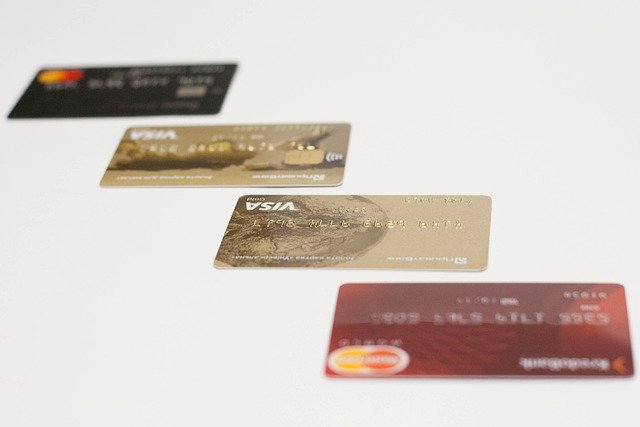Understanding buy now pay later options for cars
In recent years, the car buying process has undergone a major shift. The introduction of Buy Now Pay Later (BNPL) options has increased accessibility to vehicle ownership. This financing model allows immediate use of a vehicle while deferring payments to a later date. Several important factors should be reviewed before selecting this payment method. This article examines the BNPL model for cars, including how it functions, potential advantages, and associated risks. Various BNPL providers are compared, along with typical eligibility requirements and the impact of this model on the automotive industry. Practical tips are included to support informed decision-making when considering BNPL financing. The discussion concludes with insights into the future role of BNPL in auto finance.

What is Buy Now Pay Later for Cars?
Buy Now Pay Later for car purchases functions as a financing arrangement that allows consumers to take possession of a vehicle immediately while deferring payment or spreading it over time. Unlike traditional car loans that typically require immediate monthly payments, BNPL options often feature interest-free periods, delayed first payments, or flexible repayment structures. These programs typically fall into several categories: some offer zero interest if paid within a specific timeframe, others provide fixed installment plans with predictable payments, and some feature deferred payment options where nothing is due for several months.
The application process generally involves a credit check, though some providers advertise more lenient qualification standards than traditional lenders. The vehicle serves as collateral, similar to conventional auto financing, meaning the lender can repossess the car if payments aren’t made according to the agreement terms. Most BNPL providers integrate directly with dealerships, streamlining the purchasing process and making the financing option available at the point of sale.
Benefits of BNPL for Car Purchases
BNPL financing offers several advantages that make it attractive to car buyers seeking alternatives to traditional loans. The most immediate benefit is accessibility – these programs often approve customers with less-than-perfect credit scores who might struggle to secure conventional financing. The flexible payment structures can also improve immediate affordability, with many programs offering no payments for the first few months, allowing buyers to manage their finances before payments begin.
For budget-conscious consumers, the predictable payment schedule helps with financial planning, while the often-transparent fee structure makes understanding total costs easier than deciphering complex interest calculations. Some BNPL options feature interest-free periods, potentially reducing the overall cost of the purchase if paid within the specified timeframe. Additionally, the streamlined approval process typically provides faster decisions than traditional auto loans, allowing buyers to complete their purchase more quickly once they’ve selected a vehicle.
Potential Risks and Challenges
Despite the appealing benefits, BNPL arrangements for car purchases come with significant considerations. The most concerning aspect is the potential for higher overall costs – while initial terms may seem attractive, many BNPL options charge higher interest rates than traditional loans, especially after promotional periods end. Some arrangements include substantial late payment fees and penalties that can quickly accumulate if financial difficulties arise.
The ease of qualification and purchasing that makes these programs accessible also presents a risk of overextension, as buyers might commit to payments that ultimately strain their budget. Unlike traditional auto loans, many BNPL providers report payment activity differently to credit bureaus, potentially limiting the positive impact on credit scores even with consistent on-time payments.
Contract terms often include less consumer protection than traditional financing methods, with stricter repossession policies and fewer options for payment flexibility during hardship. Understanding these potential drawbacks is crucial before committing to a BNPL arrangement for a significant purchase like a vehicle.
Who Offers Buy Now Pay Later Financing for Cars?
The BNPL landscape for automotive purchases includes both specialized financing companies and traditional lenders adapting to market demands. Major providers have developed various models to serve different segments of car buyers, each with distinct qualification requirements and terms.
| Provider | Program Features | Qualification Requirements | Typical Terms |
|---|---|---|---|
| Affirm Auto | Fixed monthly payments, transparent fees | Credit score 640+, income verification | 12-48 month terms, 0-30% APR |
| AutoPay | Deferred payment options, flexible terms | Credit score 600+, employment history | 3-6 month deferral, then 24-72 months |
| Klarna Motors | Interest-free periods, pre-qualification | Credit score 580+, down payment required | 0% interest for 3-6 months, then variable rates |
| Zip Drive | Pay-in-four model for down payments | Soft credit check, bank account verification | Four equal payments over six weeks |
| Progressive LeaseDrive | Lease-to-own structure | No minimum credit score, income verification | Weekly or bi-weekly payments, purchase option |
Prices, rates, or cost estimates mentioned in this article are based on the latest available information but may change over time. Independent research is advised before making financial decisions.
Dealerships themselves often partner with multiple BNPL providers, offering customers a range of options based on their financial situation. Many traditional banks and credit unions have also introduced BNPL-style programs to compete in this growing market segment, sometimes offering more favorable terms to existing customers. The availability of specific programs varies by region, dealership relationships, and the type of vehicle being purchased, with some options limited to new cars while others specialize in pre-owned vehicles.
Tips for Responsible BNPL Usage When Purchasing a Vehicle
Using BNPL financing responsibly requires careful planning and a clear understanding of the commitment. Start by thoroughly reading all agreement terms, paying particular attention to what happens after promotional periods end and any potential fees for late or missed payments. Calculate the total cost of ownership, including not just the payments but also insurance, maintenance, fuel, and other operational expenses to ensure the vehicle truly fits your budget.
Comparing multiple financing options beyond just BNPL arrangements provides context for evaluating the true value of each offer. When possible, making a larger down payment can reduce the financed amount and potentially improve terms. Setting up automatic payments helps avoid late fees and potential negative credit impacts, while building an emergency fund specifically for car-related expenses provides a safety net if financial circumstances change.
Perhaps most importantly, focus on purchasing a vehicle that meets your needs rather than stretching your budget for luxury features or unnecessary upgrades. The flexibility of BNPL shouldn’t lead to overextending your finances on a depreciating asset, no matter how attractive the initial payment terms appear.
Conclusion
Buy Now Pay Later options for car purchases represent an evolving segment of automotive financing that offers both opportunities and challenges for consumers. While these programs can make vehicle ownership more accessible through flexible payment structures and sometimes lenient qualification requirements, they require careful consideration of the total costs and contractual obligations. By thoroughly researching providers, understanding the complete terms of any agreement, and maintaining a realistic budget, consumers can determine whether a BNPL arrangement aligns with their financial situation and transportation needs.




